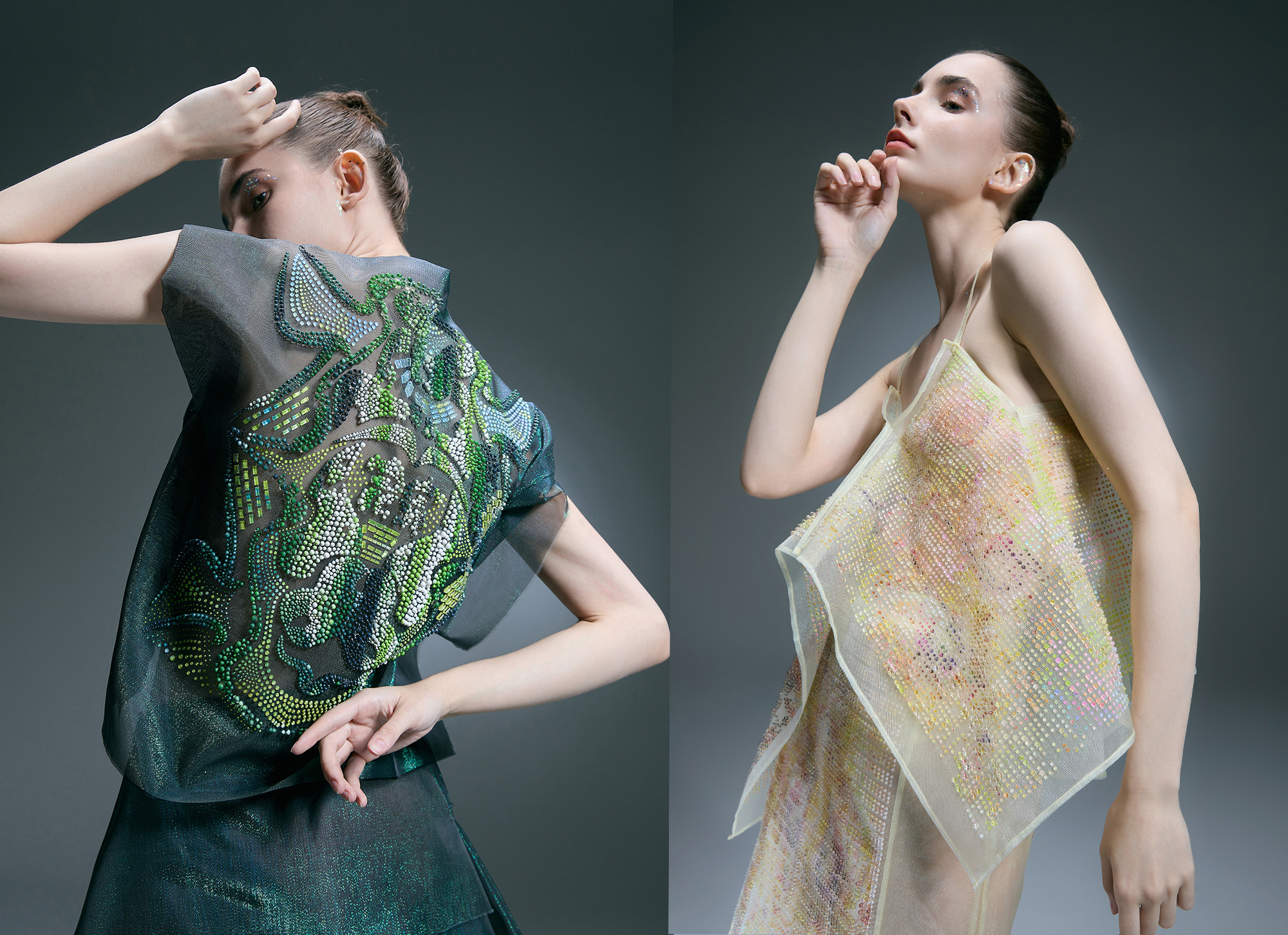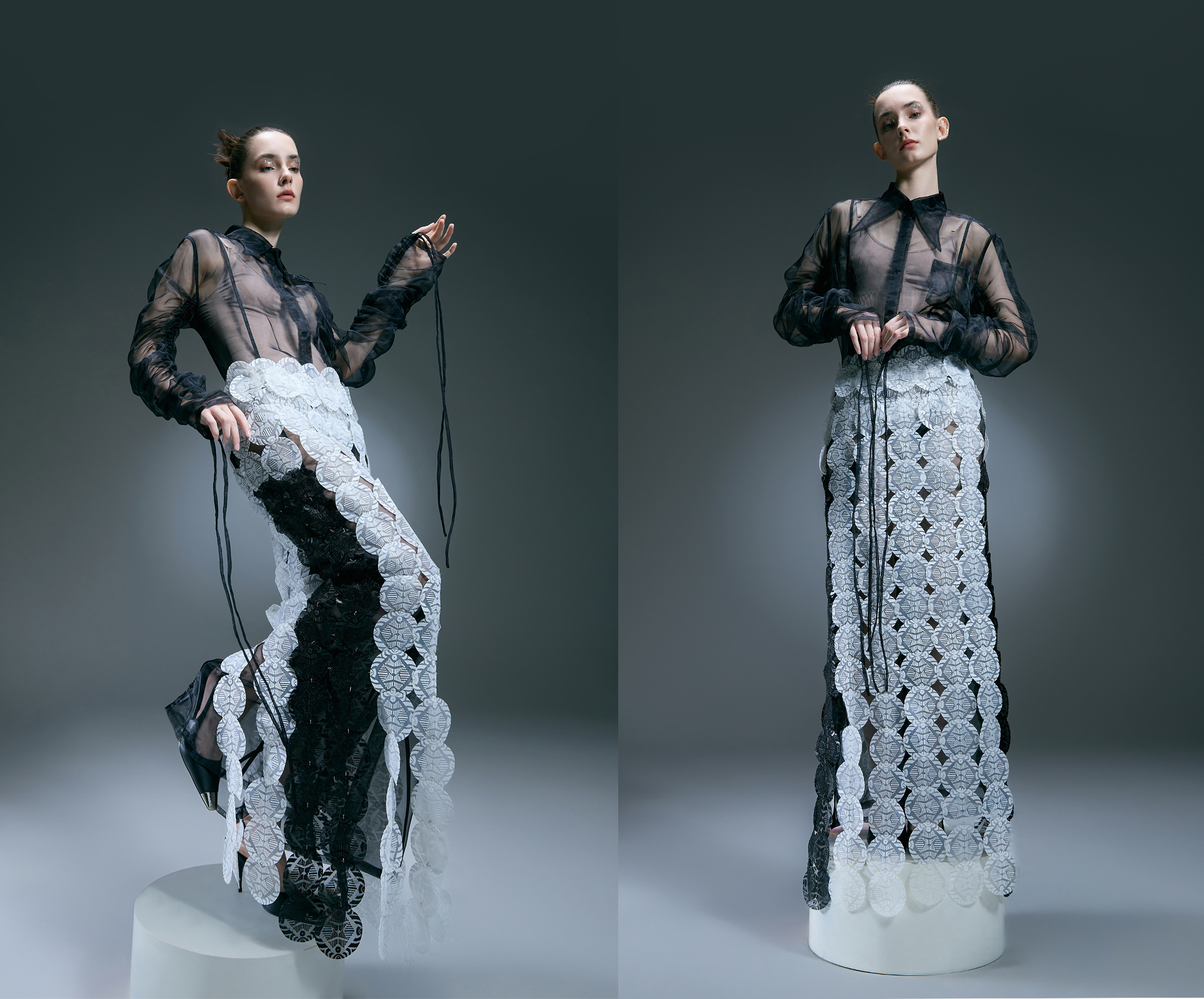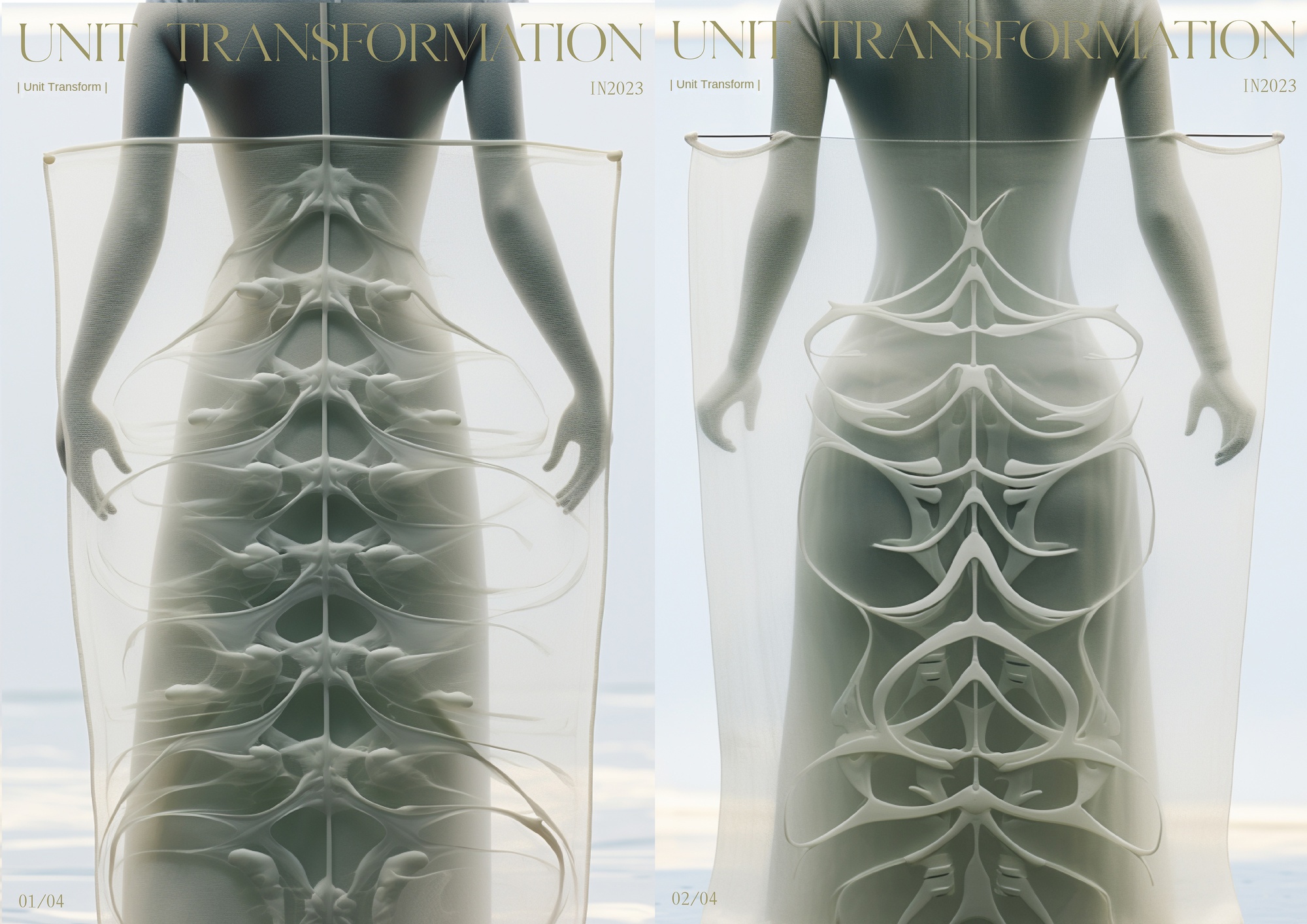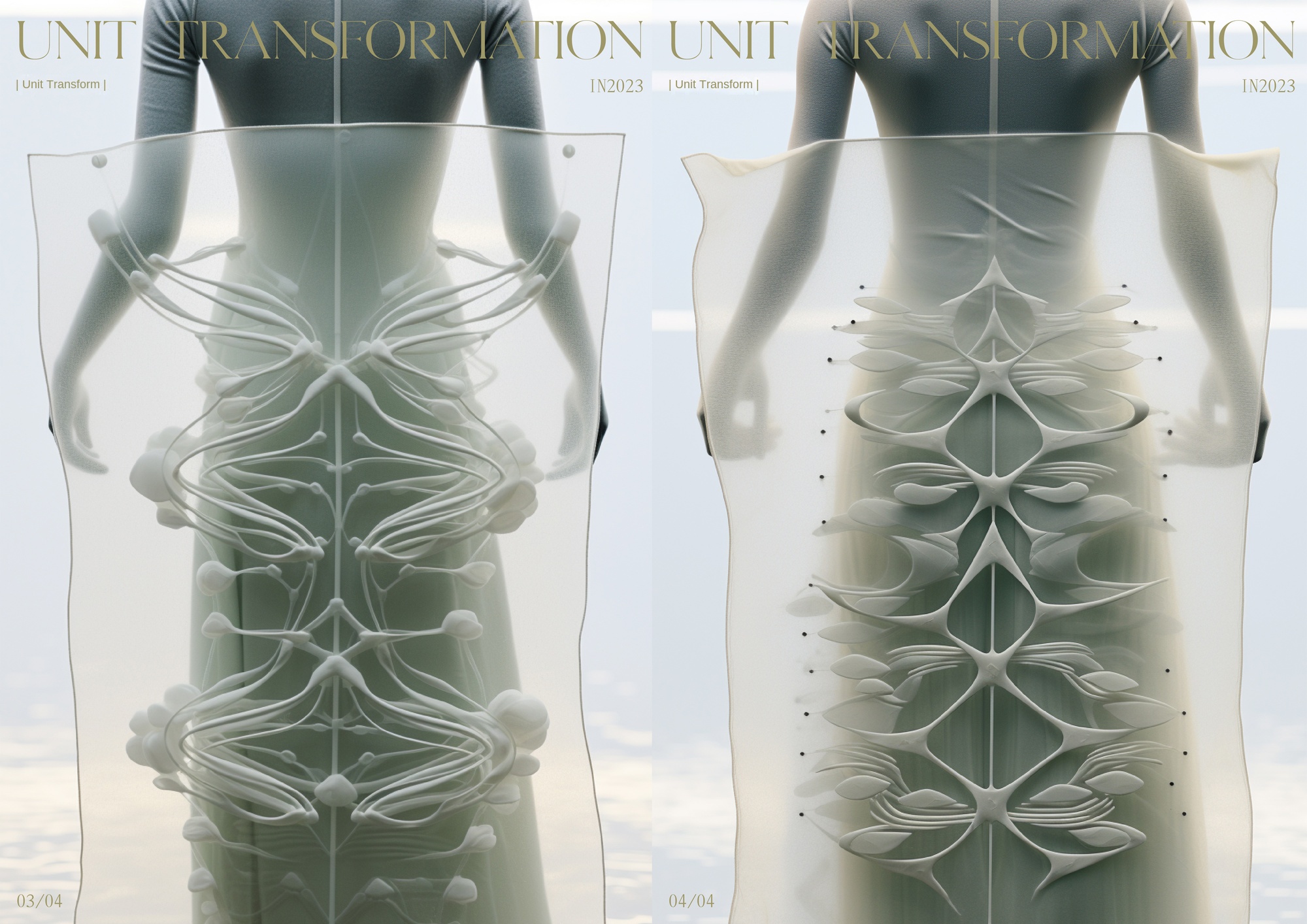
01

02

03

04
[Multi-dimensional integration: flexible composite 3D printing clothing design series based on terrain aesthetics]]
This series of works pioneered the cross-media integration and innovation of 3D printing technology and traditional textile fabrics. Through the self-developed composite manufacturing process, the organic symbiosis of rigid and flexible materials has been successfully realized. While breaking through the technical barrier of excessive rigidity of traditional 3D printing clothing, a new clothing paradigm with functional wearability and artistic appreciation has been constructed.
In the technical dimension, the work uses a breakthrough multi-process collaborative manufacturing system: the micro-terrain modeling with 0.016mm accuracy is realized by PolyJet full-color injection technology, and the supporting skeleton structure is constructed by combining FDM fused deposition technology. The innovative fabric embedded printing process, on the basis of retaining the soft and skin-friendly characteristics of textile fabrics, enables the polymer material and fabric fibers to form a mechanical interlock at the molecular level, and successfully increases the tensile strength of the material to 2.3 times that of the traditional composite process. This multi-modal manufacturing strategy not only overcomes the industry problem of the interface combination of heterogeneous materials, but also enables the garment to obtain a 45 ° free bending performance similar to that of traditional garments while maintaining the unique geometric accuracy of 3D printing.
In terms of design language, the work deeply deconstructs the morphological aesthetics of Chinese landforms, transforming geographical features such as the steep folds of the Hengduan Mountains, the terraced lines of the Loess Plateau, and the gentle slope curves of the Jiangnan hills into wearable spatial narratives. By establishing the parametric mapping of digital elevation model (DEM) and clothing structure, the elevation data is converted into the Z axis variable of the printing path, so that the surface texture of each work accurately corresponds to the contour map of a specific region. This algorithm-driven generative design reconstructs the rhythm and fluidity of the mountains in the three-dimensional tailoring. When the viewer's perspective changes, the clothing surface will present a dynamic visual effect like landform light and shadow.
At the level of artistic expression, the work constructs a dual narrative of science and technology and humanities: the micro-scale print stratification metaphors the space-time imprint of geological deposition, and the macro-scale clothing profile echoes the artistic conception of landscape painting. Especially in the interactive design of light and shadow, the refraction difference between transparent resin and matte fabric is used to make the clothing produce light and shadow changes similar to mountain fog flow in dynamic wearing. This concept of "wearable three-dimensional landscape painting" is not only a contemporary interpretation of the traditional Chinese concept of "harmony between man and nature", but also creates a new paradigm of wearable art.
1. Design dimension: dialogue between traditional technology and modern technology
(1) The work continues the pursuit of natural images in traditional Chinese costumes (such as landscape painting, cloud patterns, etc.), but uses digital means to replace traditional embroidery or printing and dyeing, reflecting the technical translation of contemporary design to local aesthetics.
(2) Through the precise controllability of 3D printing, geographic data is transformed into wearable art, which echoes the design philosophy of "learning from nature" in Chinese culture.
2. Cultural dimension: the emotional resonance of geographical symbols
(1) As a scientific surveying and mapping tool, contour lines are endowed with cultural meaning here-each line corresponds to the real geographical coordinates, making clothing a "moving topographic map of China" and stimulating the public's cognition and recognition of the land landscape.
(2) In the context of globalization, the design motif of local geographical features strengthens the expression of cultural identity and provides an innovative paradigm based on locality for "Chinese design.
3. Social and environmental dimensions: balancing technology and human needs
(1) By solving the comfort problem of 3D printing clothing, explore the practicability of technology clothing in daily scenes, and avoid that technology is only a conceptual service, but is truly integrated into life.
(2) The combination of fabric and degradable polymers (such as PLA) implies the exploration of sustainable fashion. Although it has not been carried out in depth, it provides an experimental direction for the application of environmental protection materials in the field of clothing.
In general, this series of works takes the Chinese terrain as the narrative clue, and through the innovative application of 3D printing technology, it realizes the wearing experience of "hard and soft" and the cultural expression of "touchable landscape" in clothing. It is not only a digital archive of Chinese natural heritage, but also injects scientific and technological vitality into the traditional design language, showing the humanistic temperature of local design in the technological era.
Hong Kong Polytechnic University














